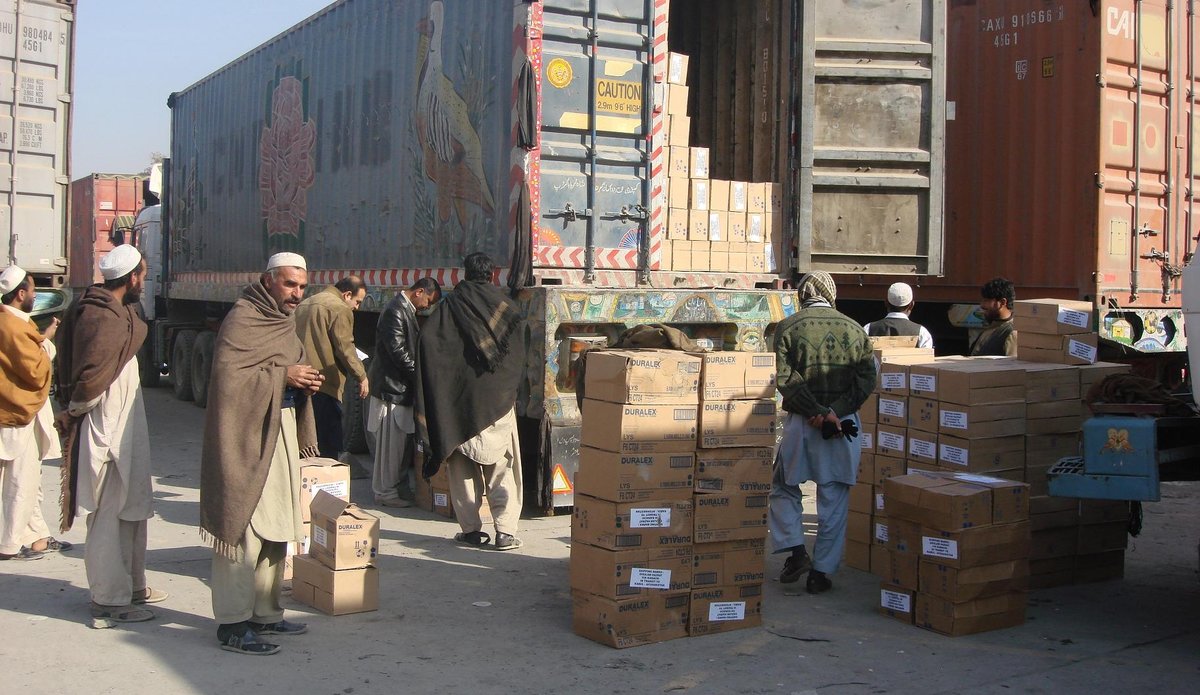Strengthening Afghan customs management
KABUL - Enhancing transparency and efficiency of customs facilitation dramatically increases Afghan trade volumes and revenue collection.
UNOPS PR English - Dari - Pashto
Every day, trucks coming from Pakistan through the border cities of Torkham or Spin Boldak stop outside the big, shiny customs and revenue headquarter in Kabul to receive final custom clearance from the Kabul customs facility next door of the goods they bring into Afghanistan.
The long line of colorful trucks, decorated with beautiful, traditional Pakistani patterns, is a sign of the increasing trade between Afghanistan and its neighbors. While the new customs and revenue headquarter on Jalalabad Road in Kabul is a sign of the improved border and customs management of the Afghan Government.
Six years back, these trucks could wait up to 7 hours for their turn. Today, they can be back on the road in less than two hours.
Since 2003, UNOPS, UNCTAD and UNIDO have been working with the Afghan Customs Department (ACD) under the Ministry of Finance on a customs modernization and trade facilitation project to improve the capacity of the ACD to effectively manage custom clearance processes and revenue collection.
The project, which is financed through interest-free credit and grants by the International Development Association (IDA), has been such a success that based on the Government of Afghanistan’s request, IDA is considering financing a follow on project to ensure that the reform process within the Customs Department continues.
From 2003 to 2009, the major focus of the project has been on establishing a more efficient and transparent customs system; improving the revenue collecting capacity of the ACD and other agencies; decreasing the obstacles and costs related to customs clearance through improvements in infrastructure, communications and administration systems; and facilitating Afghanistan’s international trade.
After years of conflict, Afghanistan’s customs and border management infrastructure and capacity have suffered severe setbacks. Today, a large group of bilateral and multilateral donors are involved in strengthening the capacity of the Government to effectively manage its borders. This joint effort has resulted in:
• reducing customs clearance time for trucks from 428 minutes to around 90 minutes
• increasing trade volumes by 300% from USD 2 billion to USD 8 billion, according to World Bank estimates
• enhancing customs revenue collection almost 700% from USD 50 million to nearly USD 400 million
• and strengthening the capacity of the ACD to deliver better and more transparent services through the implementation of electronic customs processing systems and training
For the many truck drivers and their companies which daily export and import goods to and from Afghanistan this has translated into more reliable services from the Afghan Government and decreased costs of doing business.
For the Afghan people it brings hope of re-establishing the position of Afghanistan as a main trading point along the historic Silk Route connecting the East with the West and improving trading relations with its neighbors.
Website: United Nations Office for Project Services in Afghanistan
 UN
UN







